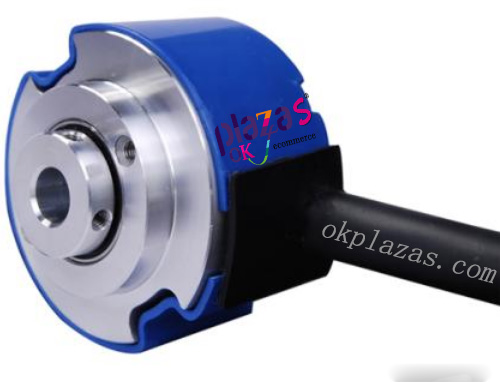The servo motor has its own encoder. Why should it have an encoder
The servo motor has its own encoder. Why should it have an encoder
The servo motor has its own encoder. Why should it have an encoder
Servo motor encoder is a kind of sensor installed on the servo motor to measure the magnetic pole position and the rotation angle and speed of the servo motor. From the difference of physical media, the servo motor encoder can be divided into photoelectric encoder and magnetoelectric encoder. In addition, the resolver is also regarded as a special servo encoder. Basically, the photoelectric encoder is used in the market. However, as a rising star, the magnetoelectric encoder has the characteristics of reliability, low price, anti-pollution, etc., and has a catch-up photoelectric encoder. trend.
The reason why the servo motor has an encoder and an encoder
1. Use a separate servo motor, which is a semi-closed loop control mode. The built-in encoder in the servo motor is used for speed feedback and position feedback.
2.The built-in encoder in the servo motor, but should there be a separate encoder connected to the servo motor? This is a control method between semi-closed loop control and full closed loop control. The built-in encoder in the servo motor is used for speed feedback, and a separate encoder is connected to the servo motor for position feedback.

3. In the fully closed loop control mode, the encoder inside the servo motor is used for speed feedback, and the position feedback uses a grating ruler.
Servo motor encoder introduction
The servo motor encoder is a sensor installed on the servo motor to measure the magnetic pole position and the rotation angle and speed of the servo motor. From the difference of physical media, the servo motor encoder can be divided into photoelectric encoder and magnetoelectric encoder. In addition, the resolver is also regarded as a special servo encoder. Basically, the photoelectric encoder is used in the market. However, as a rising star, the magnetic encoder has the characteristics of reliability, low price, and anti-pollution. It can catch up with the photoelectric encoder. trend. The connection between the servo motor encoder shaft and the machine should use a flexible connector. In addition to the above-mentioned orthogonal sin and cos signals, another sine-cosine encoder is equipped with mutually orthogonal 1Vp-p sinusoidal C and D signals in which only one signal period appears in one turn. If the C signal is used Is sin, then the D signal is cos. Through the high-rate subdivision technology of sin and cos signals, not only can the sine-cosine encoder obtain a finer nominal detection resolution than the original signal period, such as a 2048-line sine-cosine encoder After 2048 subdivision, it can reach a nominal detection resolution of more than 4 million lines per revolution. At present, many European and American servo manufacturers provide such high-resolution servo systems, but domestic manufacturers are still rare; in addition, with C, D After the C and D signals of the sine-cosine encoder of the signal are subdivided, it can also provide higher absolute position information per revolution, such as 2048 absolute positions per revolution, so the sine-cosine encoder with C and D signals can be regarded as An analog single-turn absolute encoder.

The relationship between servo motor and encoder
1. Servo drive and encoder are the two necessary components of the servo system. The servo drive control part is obtained by reading the encoder: rotor speed, rotor position and mechanical position, which can be completed:
A. Speed control of servo motor
B. Torque control of servo motor
C. Synchronous tracking of mechanical position (multiple transmission points)
D, fixed-point parking

2. There are many types of encoders. The most commonly used ones are absolute encoders, incremental encoders and resolvers, as well as some higher communication encoders. For servo, in order to obtain very high performance and accuracy, the resolution of the encoder must be improved. Commonly used servo encoders are 2000-2500 lines (pulses/revolution), but the higher the number of lines, the more expensive the encoder. Expensive, so you must understand the requirements of the control system to choose the most suitable encoder
3. For incremental encoders, the most commonly used, but the biggest problem is: the power-down position is lost, so to maintain the power-down position, you can use an absolute encoder; if the mechanical vibration is large, it is not appropriate to use a photoelectric encoder Now, this requires the use of a resolver.





